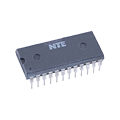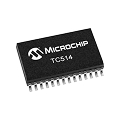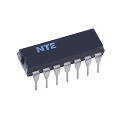Data acquisition devices are integrated circuits (ICs) that convert real-world signals into clean digital data. They also generate precise analog outputs for embedded systems, test benches, and control platforms. These components handle the analog front end (AFE), conversion, and output paths. Teams get repeatable measurements and stable actuation. Online Components supports this work through authorized sourcing, reliable stock, and fast U.S.-based shipping. Engineers and purchasers can place orders with confidence.
The selection includes Analog-to-Digital Converters (ADCs), Digital-to-Analog Converters (DACs), Digital Potentiometers, sample-and-hold circuits, simultaneous-sampling converters, and complete AFEs. Key specifications include resolution, sample rate, channel count, input type (single-ended or differential), interface (Serial Peripheral Interface (SPI), Inter-Integrated Circuit (I2C), parallel, or Low-Voltage Differential Signaling (LVDS)), reference type, supply voltage, operating temperature, noise, effective number of bits (ENOB), integral nonlinearity (INL), differential nonlinearity (DNL), and package style.
Start with the signal path. Define sensor type, expected voltage or current range, and bandwidth. This choice sets your anti-alias filter, front-end gain, and the converter's target sample rate.
Next, look beyond headline resolution to real performance. Evaluate noise density, ENOB, signal-to-noise ratio (SNR), INL/DNL, and reference stability to meet accuracy goals. Then match the device to system constraints: power budget and supply rails, required isolation for safety or noise control, and a host interface your microcontroller or field-programmable gate array (FPGA) supports well. This way, the design moves cleanly from schematic to production.
For regulated environments, confirm temperature grade and long-term drift align with the application's reliability targets.
Purchasing teams, test technicians, and design engineers shop this category when projects demand reproducible measurements and clean signal chains. Typical builds include data loggers, sensor-fusion nodes, automated test fixtures, and precision control loops.
Core application areas span industrial automation and programmable logic controllers (PLCs), energy metering and power-quality monitoring, automotive and electric-vehicle testing, medical diagnostics and patient monitoring, and Internet of Things (IoT) gateways at the edge. Whether you're validating a prototype, scaling production, or maintaining installed equipment, data acquisition devices keep real-world behavior visible and controllable.
Online Components pairs U.S.-based inventory with fast shipping. This turns urgent builds and planned maintenance into straightforward buys. Every line is authenticated through authorized channels, and the customer service team responds quickly when questions pop up.
The site's filters make it simple to lock in bits, speed, channels, input type, interface, package, and temperature range without digging through stacks of PDFs. Checkout is smooth, pricing is competitive, and tracking is clear. This keeps engineering schedules and purchasing timelines aligned. Ready to move from short list to purchase? Buy now and keep your bench (and your line) on schedule.
An Analog-to-Digital Converter (ADC) samples an analog signal and outputs digital codes. A Digital-to-Analog Converter (DAC) generates analog voltages or waveforms from digital values. Many designs use both: the ADC for measurement and the DAC for actuation or calibration.
Higher resolution improves small-signal detail. Higher sample rates capture fast dynamics. Driving both at the limit taxes the analog front end and clocks, so pick the lowest rate that covers bandwidth and then choose resolution based on required dynamic range and ENOB.
If grounds differ or wiring runs through noisy or high-voltage environments, galvanic isolation between sensors and the host prevents ground loops and protects the processor. Isolated ADCs, isolated amplifiers, or digital isolators break the path for fault currents, improving safety and measurement stability.
Serial Peripheral Interface (SPI) offers high throughput with simple wiring. Inter-Integrated Circuit (I2C) saves pins for slower, multi-drop links. Parallel or LVDS fits very high data rates. Match the bus to required bandwidth, device count, and the microcontroller or FPGA in your design.
See More





